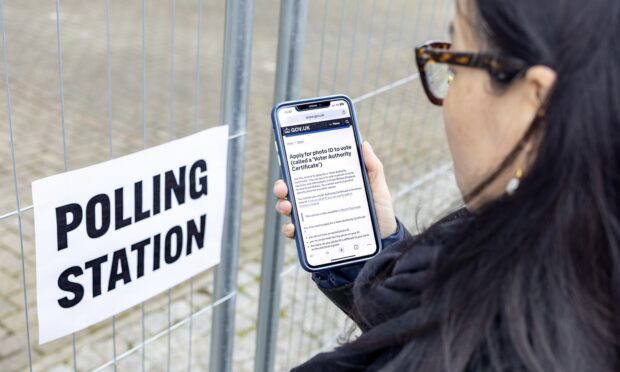Mark Hastings of Rainmaker Solutions applauds the Government’s guidance on Whitehall IT disaggregation, but argues that it need not take anywhere near as long as the four years suggested
For many government departments, outsourcing IT services to large systems integrators has simply not worked. The result has been contract lock-ins, higher prices because of reduced competition, large capital spend on infrastructure that quickly goes out of date, and an inability to take advantage of new technologies.
In that context, it was encouraging to read the Government Commercial Function’s (GCF) recent guidance to organisations on the principles to follow when exiting large expiring IT contracts.
GCF is right to claim that disaggregation can give organisations better visibility and control of systems and substantial cost savings. They are also right to warn that disaggregation can be complex. But they are wrong to suggest that disaggregation typically takes longer than anticipated, often up to four years. And what about guidance for the large number of departments with an annual IT spend of less than £20m?
Our experience is that the principles for IT disaggregation are the same, no matter the size. And that, by following clear ground rules, disaggregation can be accelerated, with delivery in as little as 18 months.
- Ditch static target operating models
The government’s guiding principles are sound, and pick out the significance of dealing with disaggregation as a transformation activity, rather than just a transfer of technical services. But they fall into the trap of dealing in the currency of target operating models (TOM).
Although aligning a static TOM to the department sounds like a sensible plan, it risks defining a set of requirements based on a set point in time. By the time disaggregation is delivered, the department will be lumbered with technology that is already out of date.
To deliver successful disaggregation, departments need to adopt an iterative model, totally focused on delivering the organisation’s objectives and meeting user needs. Technology must be seen as an enabler of the vision, not simply as an end in itself.
They must manage the risk of moving to new procurement models by understanding early what they will bring in house, and what they will rely on the market to deliver. The technology marketplace for services is becoming more commodity-based, and that’s a really good way to minimise cost and deliver common, proven services to users.
- Mindset is as important as skill set
Just as the technology environment needs to evolve, so do workforce skills. Most departments are not well equipped to deliver services that were once handled by third parties or multiple suppliers. There needs to be a commitment to rapidly gaining the new skills needed to take overall control of the disaggregated environment.
But this is also about developing the right mindsets and the approaches required to deliver and control the new service delivery model. Departments need to adopt a more agile ‘win or learn’ mindset when building services that are novel, and a more controlled and measured approach to commodity and utility delivery and management.
This is done by recruiting entrepreneurial people who are willing to try new ideas and fail fast. But also by finding a delivery partner who commits to ‘working out loud’ and transferring knowledge – a partner that can add burst capability where needed: user research, service design, architecture, commercial, delivery, change or service management.
The end result is a department that can challenge, drive and demand better services from suppliers, at better prices, that meet user needs. It means the department doesn’t need to rely on consultants and delivery partners to control IT systems and infrastructure in the future.
- Manage complexity and risk
The complexity of the current technology provision is a big factor in influencing the pace at which disaggregation may be delivered. The challenge is to keep it as simple as possible. Organisational mapping is hugely powerful.
Mapping helps deconstruct complex landscapes so that appropriate decisions can be made for the different parts of the department. It allows clear identification and management of supply side risks as well as on-site risks, mitigating their potential impact.
The maps help influence sourcing options, providing the necessary firepower to engage the market and find solutions to the department’s challenges, rather than prescribing what the department thinks it needs. It’s an engaging way of working with the market, resulting in better solutions delivered at pace.
The benefits
Delivering at pace doesn’t equate to a reduction in benefits, actually it accelerates them. Typically, we’re seeing disaggregation programmes deliver modern, flexible IT solutions, that benefit from market-leading service packages, and which align better with user needs.
Departments are better equipped to take control and ownership of their own services through greater personal and collective empowerment, by using the right management and sourcing techniques for each service. And by reducing contract lock-in, lowering the barriers of entry for new suppliers and leveraging market innovation, we are seeing savings of up to 40% on current run costs.
The government is backing disaggregation – the benefits and savings are real, no matter the size of the department’s annual IT spend.
But department’s shouldn’t be deterred by perceived complexity or expected timescales. A focus on vision and user needs, building in-house capacity, minimising risk through mapping, and the effective use of market solutions will deliver the hoped-for benefits more quickly than expected.




Thanks for your marvelous posting! I definitely enjoyed reading it, you might be a great author.I will make sure to bookmark your blog and may come back from now on. I want to encourage continue your great job, have a nice afternoon!
The next time I learn a weblog, I hope that it doesnt disappoint me as a lot as this one. I imply, I do know it was my choice to read, however I actually thought youd have one thing interesting to say. All I hear is a bunch of whining about one thing that you may fix if you happen to werent too busy in search of attention.
Aw, this was an incredibly good post. Taking a few minutes and actual effort to produce a superb article… but what can I say… I procrastinate a whole lot and never manage to get anything done.